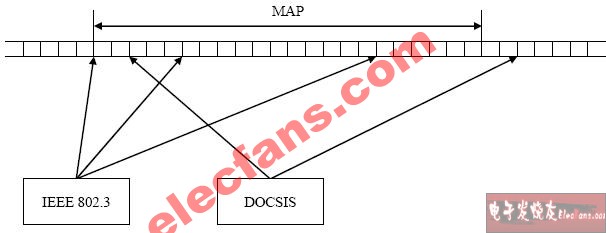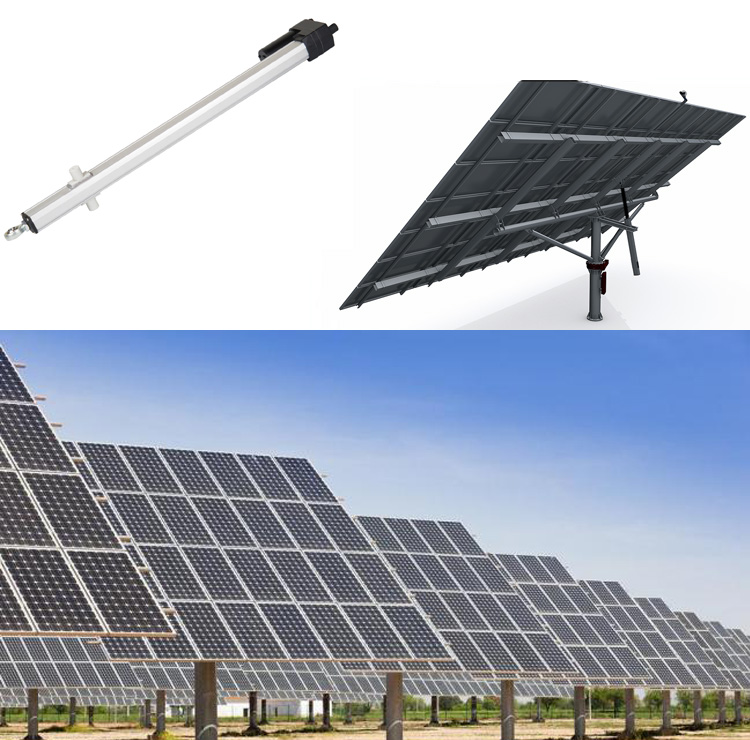1 CATV network upstream transmission principle
The upstream transmission of the CATV network is a multi-point to single-point transmission [1], and the access control of shared media must be considered. DOCSIS is a media access control specification developed by the American Cable Laboratory and applied to CATV networks. It is now widely adopted by the industry. DOCSIS requires FDMA and TDMA for upstream transmission of CATV networks. DOCSIS divides the upstream channel into several sub-channels according to frequency, adopts TDMA in each sub-channel, and divides it into small time periods according to time, called micro-slots. There are two main types of time slots: contention time slots and authorized time slots. Each station that will perform uplink transmission first sends a request to the headend in the contention time slot. After the headend receives and processes the request, it sends authorization information (MAP) to the station. After receiving the authorization information, the station waits in the authorized time slot transmission. Because there may be multiple sites accessing the same contention slot at the same time, causing transmission conflicts. The quality of the conflict resolution algorithm directly affects the characteristics of the access delay of the entire upstream transmission, so it is of great significance to study the conflict resolution algorithm.
2 Conflict resolution algorithm
2.1 Binary exponential back-off algorithm
The conflict resolution algorithm adopted by DOCSIS is a binary exponential backoff (BEB) [2], the principle is as follows:
1) When a conflict occurs, backoff = random (0, exp (2, BS + k));
2) The station tries to retransmit after waiting for backoff time slots.
The variable BS is the back-off start value, which is specified by the headend. The variable k is the number of station retransmissions. The variable backoff is the number of time slots to wait before the station retransmission. The function exp (2, k) calculates the power of 2 to k (x, y) get a random number r and x
BEB was originally applied to IEEE 802.3 and was not fully suitable for DOCSIS. First, the IEEE 802.3 site itself has the ability to detect conflicts. When a conflict occurs, the site can immediately detect it, and then backs up according to the conflict resolution algorithm, waiting for retransmission. However, the DOCSIS site cannot detect conflicts. When a conflict occurs, the site does not know. Only when the new MAP arrives, the site finds that it does not have its own request authorization or hang information, and then it knows that the last request was sent. The station can then back up according to the conflict resolution algorithm and wait for retransmission. Since each request and authorization phase takes a long time and is fixed, if the request is sent to avoid collisions as much as possible, then the access delay characteristic will be relatively good.

Figure 1 shows the comparison of IEEE 802.3 and DOCSIS access methods. It can be seen from the figure that the IEEE 802.3 station can access the channel at any time, while the DOCSIS station can only access once within a MAP. If there is a conflict, it must wait for the next MAP to arrive. This shows that when the DOCSIS sites collide, their access delay will exceed the time of one MAP. It is not like IEEE 802.3 sites that can immediately fall back according to the conflict resolution algorithm and wait for retransmission.
2.3 Reverse Binary Exponential Backoff Algorithm Based on the above analysis, a new conflict resolution algorithm-backward binary exponent backoff algorithm (BBEB) is proposed. The principle is as follows:
1) When a conflict occurs, backoff = random (0, exp (2, BS-k));
2) The station tries to retransmit after waiting for backoff time slots.
Since the BS setting is larger at the start of back-off, the probability that the site will collide for the first time is small. If a conflict occurs, the back-off window becomes smaller, and all conflicting sites can choose to access earlier time slots.
Research on Conflict Resolution Algorithm Based on DOCSIS
TOMUU DC Solar Tracker Electric Linear Actuators are a powerful Electric Linear Movement Actuator, designed for Solar Tracker and other industry field. It features high load capability, long lifetime and low power consumption. The adjustable limit cam is convenient for the user to fine-tune the stroke, and moreover, the optical encoder possesses high resolution of stroke feedback, which is helpful on stroke control. Ball screw or ACME screw threaded spindle is available.

Solar Tracker Actuator,Solar Tracker Linear Actuator,24V Solar Tracker Actuator,Electric Solar Tracker Actuator
TOMUU (DONGGUAN) ACTUATOR TECHNOLOGY CO., LTD. , http://www.tomuu.com